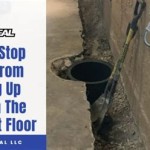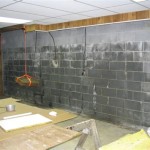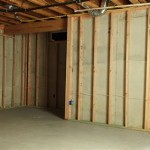How to Repair Cracked Concrete Basement Floors
Cracked concrete basement floors are a common issue in many homes. These cracks can range from hairline fissures to significant gaps, and understanding the cause and severity of the crack is crucial for effective repair. This article outlines the steps involved in repairing various types of cracks in concrete basement floors.
Assessment and Preparation:
Before beginning any repair, the cracks should be thoroughly assessed. This includes determining the width, depth, and length of the crack. The cause of the cracking should also be investigated. Factors like settling, hydrostatic pressure, or shrinkage can contribute to cracks and influence the chosen repair method. Cleaning the crack is essential for proper adhesion of repair materials. Use a wire brush, vacuum, and compressed air to remove loose debris, dust, and concrete fragments.Repairing Hairline Cracks:
Hairline cracks, less than 1/16 inch wide, are often caused by concrete shrinkage and pose minimal structural concern. These cracks can be effectively repaired using concrete crack fillers or epoxy injection systems. Concrete crack fillers are applied topically and are suitable for non-moving cracks. Epoxy injection involves injecting epoxy resin into the crack, which seals and strengthens the concrete from within. This method is preferred for cracks that show signs of movement.Repairing Wider Cracks (1/16 inch to 1/2 inch):
Wider cracks require more substantial repair methods. One common approach is to use an epoxy or polyurethane injection system. These systems are designed to fill the void completely and restore structural integrity. Before injecting, the crack should be routed out slightly using a grinder or chisel to create a wider opening at the surface. This allows for better penetration and bonding of the repair material. After injection, the surface can be ground smooth for a seamless finish.Repairing Large Cracks and Gaps (Greater than 1/2 inch):
Cracks exceeding 1/2 inch often indicate significant structural issues and may require professional consultation. These larger cracks may be repaired using methods such as patching or partial slab replacement. Patching involves chiseling out the damaged concrete and filling the void with a concrete patching compound. This method is suitable for localized damage. For more extensive cracking or unstable slabs, partial or full slab replacement may be necessary. This involves removing the damaged section of the concrete and pouring a new section. This method is typically more complex and requires specialized equipment and expertise.Controlling Water Intrusion:
If the cracks are actively leaking, address the water intrusion before proceeding with the repair. This may involve exterior waterproofing measures, such as installing drainage systems or applying a waterproof membrane to the exterior foundation walls. Interior drain tile systems can also be installed to manage water seepage beneath the slab.Concrete Resurfacing:
After repairing the cracks, consider resurfacing the entire basement floor to create a uniform and aesthetically pleasing finish. This can involve applying a self-leveling concrete overlay or an epoxy coating. These coatings provide a durable and waterproof surface that can protect the underlying concrete from further damage.Materials and Tools:
The specific materials and tools required will depend on the chosen repair method. Commonly used materials include concrete crack fillers, epoxy injection systems, concrete patching compounds, concrete mix, sealant, and primer. Necessary tools may include a wire brush, chisel, hammer, grinder, vacuum, trowel, putty knife, and safety glasses.Safety Precautions:
When undertaking concrete repair, safety should be a primary concern. Always wear appropriate personal protective equipment, including safety glasses, gloves, and a dust mask. Ensure adequate ventilation in the work area, especially when working with epoxy or other chemical-based products. Follow manufacturer instructions carefully for all materials and tools.Professional Consultation:
While minor cracks can often be repaired using DIY methods, larger cracks or complex situations may require the expertise of a structural engineer or experienced concrete contractor. They can assess the underlying cause of the cracking and recommend the most appropriate repair strategy.Long-Term Maintenance:
After the repair is completed, regular maintenance can help prevent future cracking. This includes maintaining proper drainage around the foundation, controlling humidity levels in the basement, and addressing any signs of water intrusion promptly. Periodic inspections of the basement floor for new cracks are also recommended.Understanding the different repair methods and choosing the correct approach based on the severity and cause of the cracking is essential for successful concrete basement floor repair. Addressing underlying issues like water intrusion and following proper safety precautions are also critical for a lasting and effective repair.

Causes Of Basement Floor Cracks And What To Do About Them News Events For Systems Inc

Foundation Floor Crack Repair Crackx

Concrete Floor Crack Repair Step 1 Exposing Fresh

Cracks In Basement Floor Signs Of Foundation Problems

Concrete Basement Cellar Floor Crack Repair In Worcester Ma

How To Fix Cracks Crumbles And Breaks In Concrete Dap Global

Crackweld Floor Repair Kit 4 Pack Radonseal

Why Your Basement Floor Is Cracked Foundation Repair Company In Or And Wa Terrafirma

How To Repair Concrete Cracks In A Floor Baileylineroad

Basement Floor Cracks How To Fix In A
Related Posts







